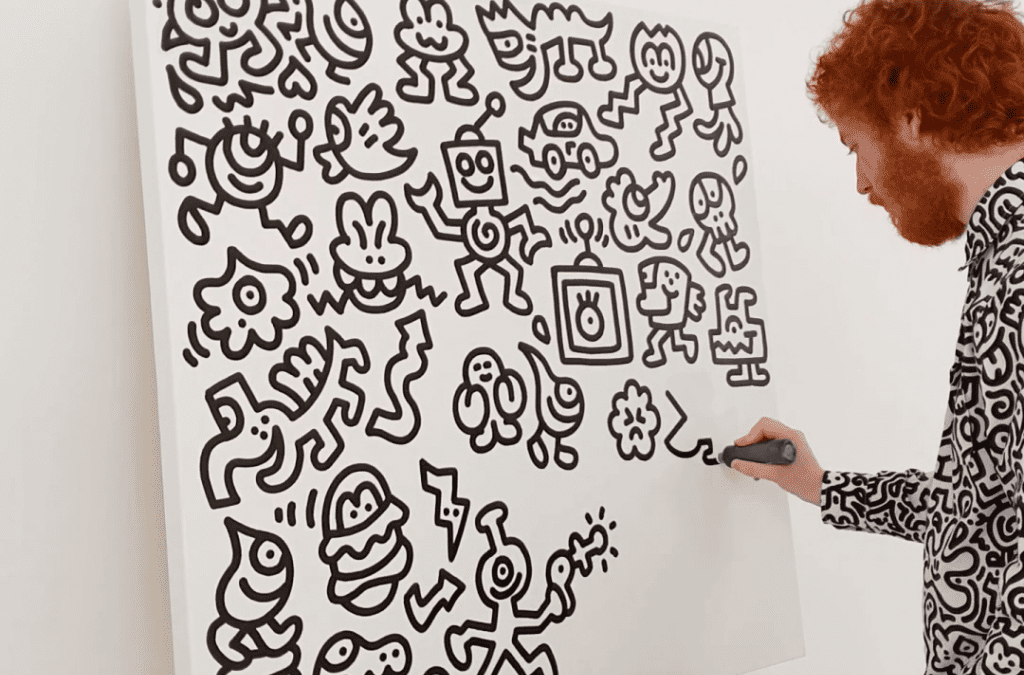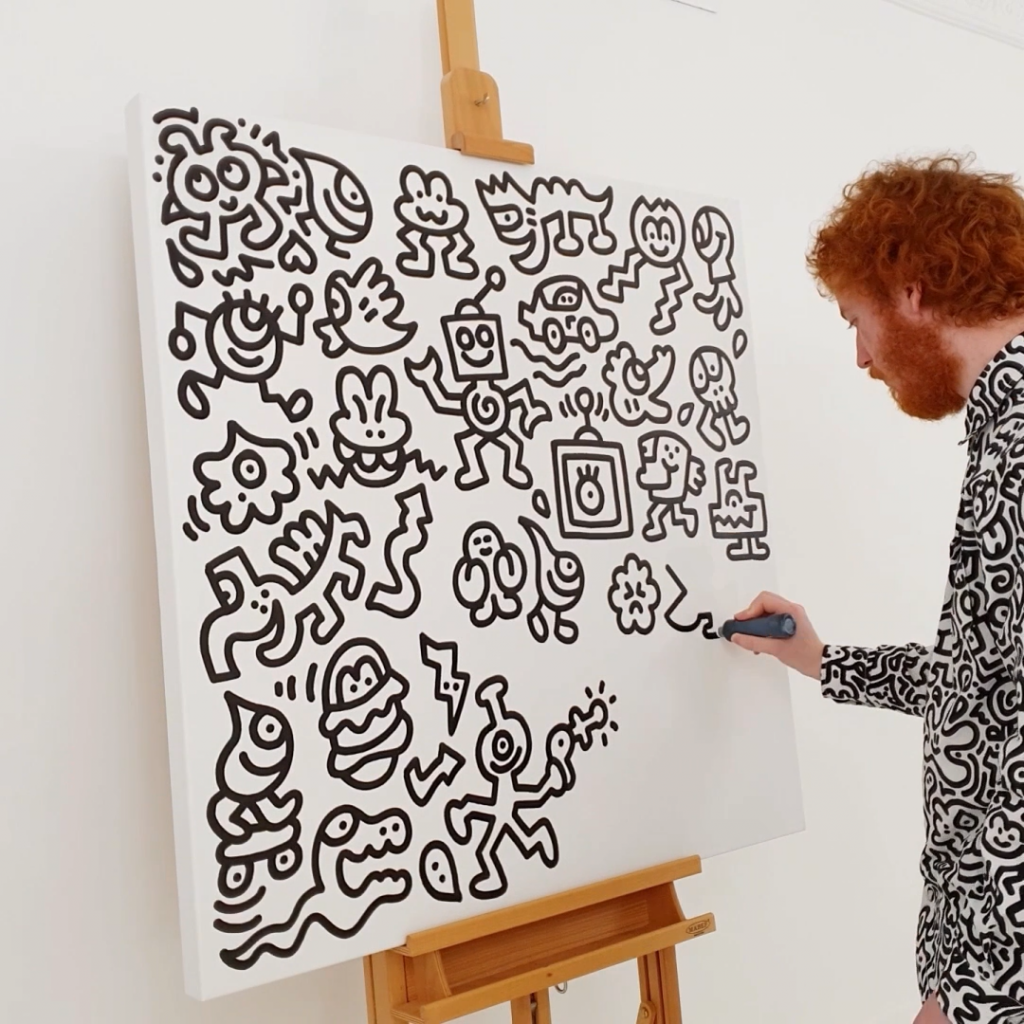SuperRare Labs Curatorial Editor Linda Dounia Rebeiz interviews Ayla El Moussa about how she draws inspiration from the Renaissance period, how she approaches nude portraiture, and her “Painted Muse” Series on SuperRare.

Paper Diamond: Left To My Own Devices and the techno-nature hybrid
“Left To My Own Devices”
There is more opportunity for humans to connect with one another than ever before, but also more opportunity for more intense isolation. The last two years have perhaps measured this contradiction best, with platforms online continuing to bring us together virtually while also serving as a constant reminder of the distance between each person and real life communities and spaces. Is it any surprise, then, that DJ, producer, and musician Alex Botwin, whose stage name is Paper Diamond, developed his most recent creative endeavor over the course of the past year, a time when many of us began to navigate re-learning the art of human interaction as well as growing and transforming it?
Paper Diamond’s “Left To My Own Devices,” or LMTOD, is his first NFT collection. The series contains five single-edition pieces. Prior to “Left To My Own Devices,” Paper Diamond released three albums: 2011’s Levitate, 2013’s Paragon, and 2018’s Holograms. He’s played festivals including Coachella, Electric Zoo, Electric Forest, Lollapalooza, and Bonnaroo to crowds who showed up to experience the physical, visceral, concrete effects of his music. His tracks are designed for sensation, thumping and pulsing but also smooth and gliding, grounding listeners, connecting them to their own bodies and the bodies that surround them. And though his music is available outside the context of a festival stage, namely on music streaming platforms like Spotify and Apple Music, this is Paper Diamond’s first major foray into a medium where his audience is entirely a virtual one.


I have been obsessed with creative breakthroughs my entire life. Music, art and technology have alway been the vehicles for this obsession. The trio have served me for as long as I can remember, occupying my mind and driving my passions and direction in life.
— Paper Diamond
“Patiently, I’ve spent the last year creating & observing the change that NFTs are establishing,” he said. He views NFTs as an industry changing stride forward for artists, excited that “humans can connect directly without big companies in the middle. Communities are being formed. There is a newfound freedom in creativity.” He is fascinated by the ever-blurring distinction between the physical and virtual worlds, and he seeks to explore what that means in relation to the ways people are able to connect. “Left To My Own Devices” stands as “a perspective on life, death, time, and connectivity through our digital age.” Each piece incorporates sounds and animations entirely of Paper Diamond’s conception, all addressing these very themes, meditating on not only the innovation that humanity’s relationship with technology brings, but also exercising a degree of caution, thrilled for what the future might hold, yet aware that nothing is perfect, that unexpected challenges always have the possibility to arise, which in turn is part of the adventure.
We are more technologically connected than ever before, but does the type of connectivity we experience serve our deeper needs?
— Paper Diamond
Perhaps, when virtual connectivity is constant, ever-present, overbearing, it does not. How do we find balance, stave off screen burnout? The collection is called “Left To My Own Devices,” explicitly addressing isolation, which in this case is not always a painful or lonely thing, but a space to create and grow and explore. To reflect. “I believe that we are all seeking human connection,” he said. Separating oneself from posts and feeds, instead using technology as a solo tool for creation, is just as much a means of connectivity, if not so obvious, and maybe more conducive to real connection rather than the superficial. Technology is what allowed Paper Diamond to create each piece in the collection on his own. But it also is what allows him to share his work with the world. He does also ask, “What would the world be like if it were Left To My Own Devices?”


In this series of NFTs, he builds out a space that is entirely his, where he has room not necessarily to provide an answer, because the question itself is enormous and potentially unanswerable. But he imagines and explores the complexities and incongruities that arise when the real and virtual worlds no longer appear separate, when physical and online connection must both coexist and compete, and what that reveals about humanity’s relationship with art and culture.

Oliver Scialdone is a queer writer and artist based in Brooklyn, NY. They earned a dual-MFA from The New School, and their work can be found in Peach Mag, ImageOut Write, and elsewhere. They used to host the reading series Satellite Lit and they're the Associate Editor at SuperRare Magazine.
Artist Discovery







Curated Conversations: Emily Xie
SuperRare Labs digital editor Shutong Liu interviews Emily Xie about how her Art History and Engineering background informed her work, her past year as a full-time artist, and the generative art landscape.
Feature Articles



Re-imagining queer histories: an interview with ClownVamp
The artist’s new show, “Chester Charles: The Lost Grand Master,” addresses the self-censorship forced upon gay artists throughout history and the queer potential inherent to AI-assisted art.
























